It is generally recommended that the blossoms on new strawberry plants be removed in the first growing year. This always comes as a difficult thing for strawberry growers to do.
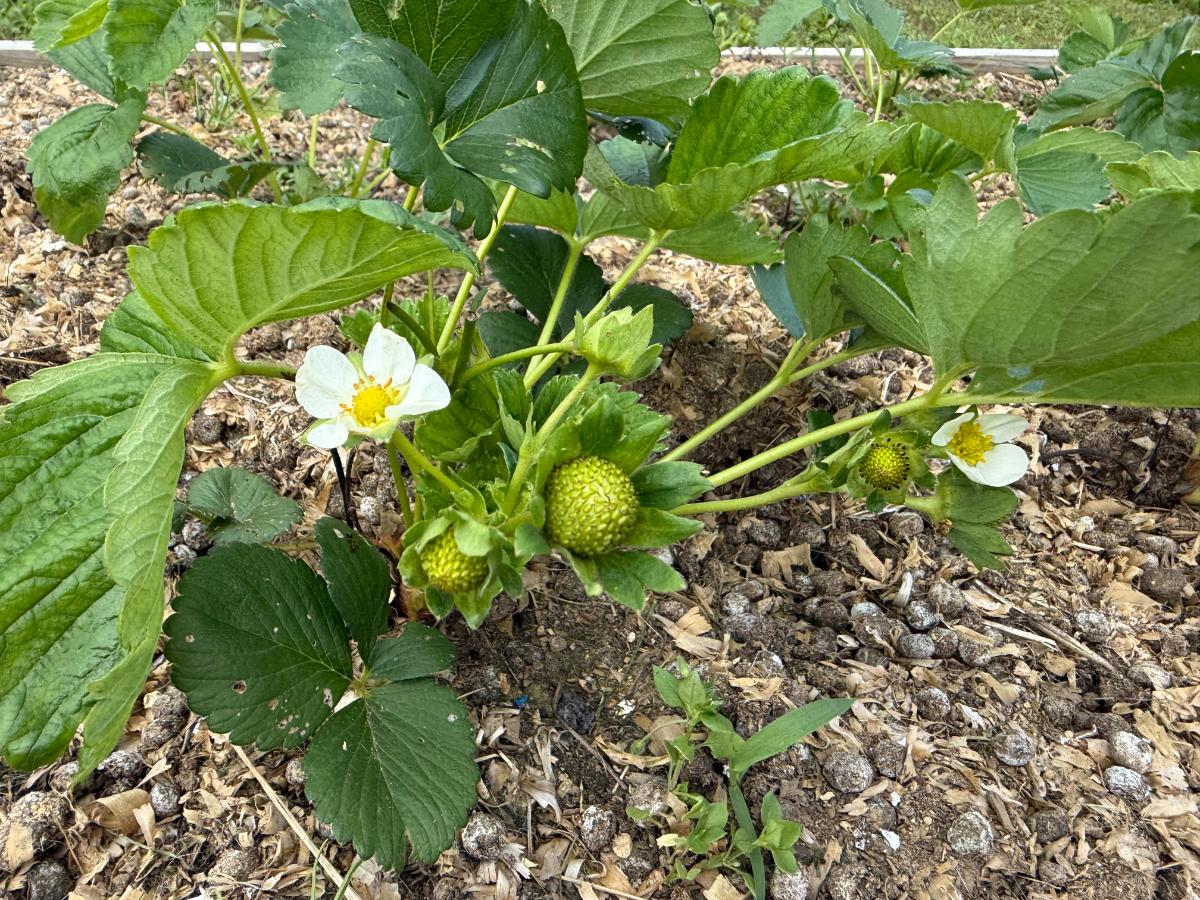
After all, you’re looking forward to those big, delicious berries, and if you take the blossoms off in the first year, it will be a whole year before you will get a crop (at least, for June-bearing strawberry plants — read on!).
So…do you really have to pinch off the blossoms on your first-year strawberry plants? Do you really have to waste that opportunity to harvest your own fresh fruit for a year?
Jump to:
- The Recommendation
- Why Should You Remove the First Flush of Strawberry Blossoms?
- What Happens If You Don’t Remove the Blossoms?
- June Bearing vs. Everbearing Strawberries
- So, Do You HAVE To Remove First-Year Strawberry Blossoms?
- Everbearing plants can offer the best of both worlds
- To Pinch or Not to Pinch First Year Strawberry Blossoms
The Recommendation
The recommendation is to clip or pinch off the first blossoms on new strawberry plants. You should do this for all the blossoms on the new strawberry plants. Note that strawberries will flush blossoms for a period of about two to three weeks at the end of spring or at the beginning of summer, generally in June and ending by July.
For June-bearing strawberries, this will be all the strawberry flowers they will put out for the year. Everbearing and day-neutral strawberries will come back with more flowers in a few weeks.
This has been the recommendation of leading strawberry growers’ associations, nurseries, universities, and growing experts for most of recent memory. Still, some strawberry growers do ignore that advice.
Why Should You Remove the First Flush of Strawberry Blossoms?

Strawberries are propagated from runners from parent plants (at least, the large berries most people grow are). The flowers are set as tiny buds in the crown of the plant in the fall, the year before the flowers bloom and grow into strawberries. So all young strawberry plants will produce blossoms in the first year.
The reason that it is recommended to pinch those flowers is that removing the first year’s blossoms allows the plant to put its energy into root growth and stem and leaf growth. Blossoming and fruiting take a lot of plant energy and a lot of resources.
By redirecting the energy and resources, the plants will grow bigger, better, and stronger root systems. This, in turn, results in bigger, better plant growth.
In time, the result is that the plants will be stronger and will be better prepared to fight off insects and diseases. They will have more roots and plant structure to support more blossoms for the next growing year. The plants will also be able to develop that fruit into more berries per plant and berries that are larger than they would be if the plant were allowed to fruit and supported next year’s crop only on the lesser root and plant structure.
What Happens If You Don’t Remove the Blossoms?
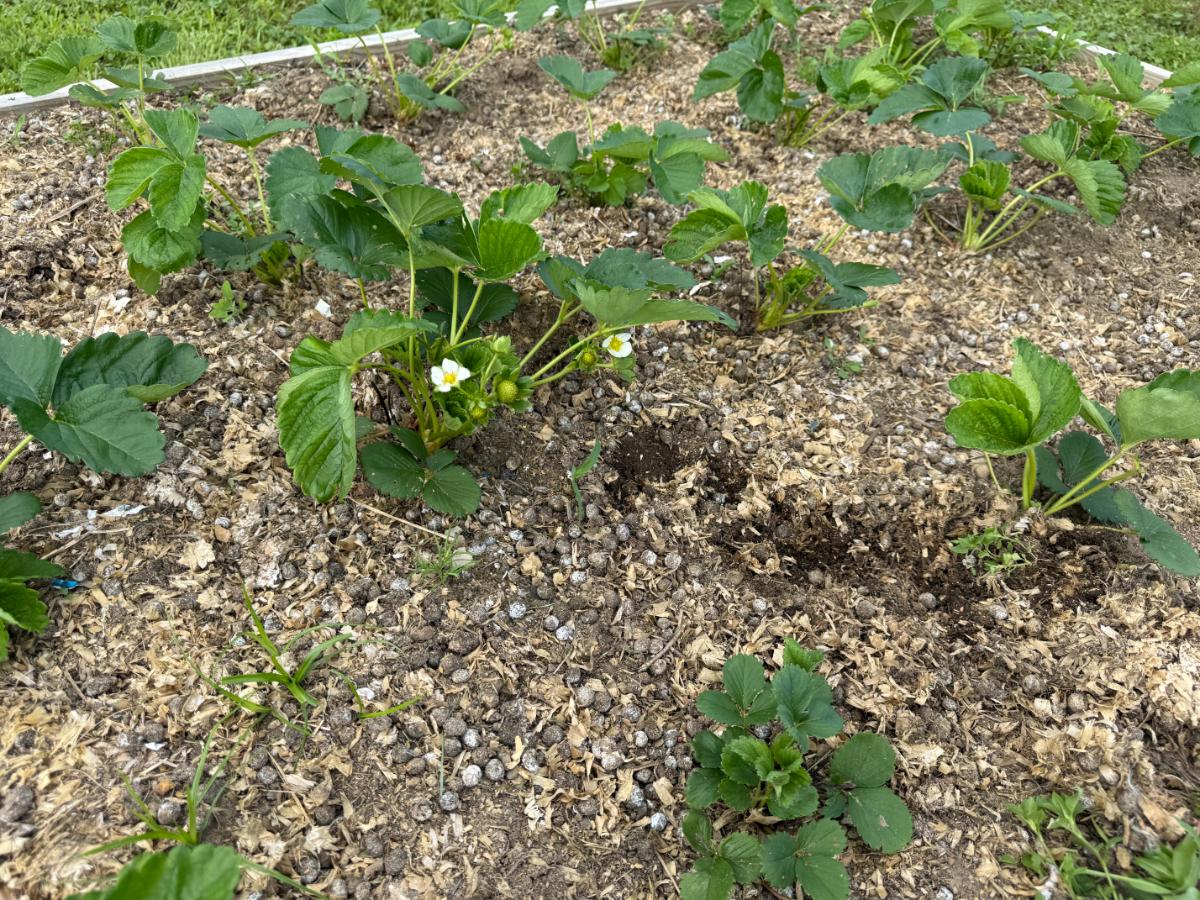
There are a range of things that can happen if you do not remove the first strawberry flowers; there is a range of results for the plants and for their fruit.
There is some risk to the new strawberry plants if you don’t remove the first year’s blossoms. Risks include
- Poor access to water and soil moisture
- Poor access to nutrient uptake
- Limited root growth
- Fewer runners produced, which makes it harder to fill in your bed’s rows for June bearing plants
- Shallower, smaller roots that die more easily in winter dormancy
- Fewer bed plants in June bearing patches are also a risk to the death of the bed or patch over winter
- Smaller berries
- Fewer berries, especially in years one and two of establishment
- Poorer bud set in the fall crowns (so smaller next year harvest)
- Smaller and shorter first-year harvest
If the plants are not well established, and if they do not have adequate nutrients in the soil or adequate water, there is a chance that the new plants could die because they won’t have the roots to support them, especially when fruiting. This should not happen (even if you leave the flowers on the plants) if the plants are well provided for (soil-wise and by location) and if they receive enough regular watering (from you or from rain).
You might not get as good of runner production on June-bearing plants without pinching the blossoms, either. Runners help to fill in your bed. This makes a fuller, bigger, more productive strawberry patch.
All of this also adds up to better winter survival — from bigger, better, better rooted plants and from having more of them through runner production. Overall, a pinched strawberry bed is more likely not to die off over the winter.
What is more likely to occur is that your plants will live, but they won’t reach their full growth potential. The root ball will not develop into as large an area of roots. The plant’s stems and leaves will not grow as much. The plant will be smaller than it would have been otherwise if you had removed the blossoms.
The plants will probably never grow to be as big as they would have if you had removed those initial blossoms. Over time, they might get close, but that might not happen for another year or two. And in that time, the plants are still trying to do double duty ,growing the plant as they are growing the fruit.
On the other hand, if you leave the blossoms on for the first year, you will get strawberries in that first year. There will be fewer of them. They almost certainly will be smaller than they would be if you pinched the flowers and waited until next year.
In truth, it is an option to not pinch off the blossoms, and most of the time, with good gardening and good soil, you’ll still have fair-sized plants and at least a modest strawberry harvest.
June Bearing vs. Everbearing Strawberries
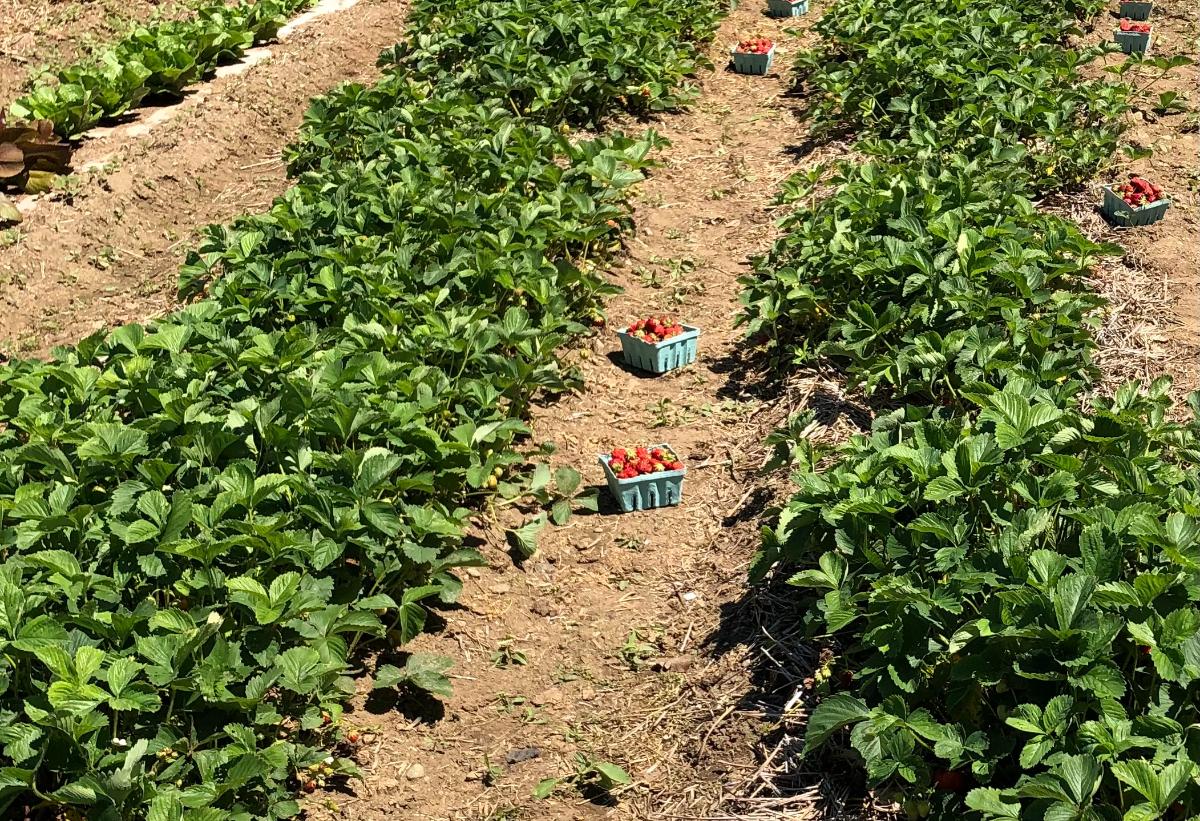
It must be pointed out that June bearing and everbearing (including day-neutral) strawberries are different and should be managed differently.
- June-bearing strawberries set their flower buds the fall before the spring harvest
- This is, in part, why removing those first-year buds is considered important and why it makes such a difference in root and plant growth — the plants have already been disturbed and stressed when they were dug as runners and then transplanted (either into pots, as plugs, or as bare root plants)
- Everbearing plants flush for about three weeks in or around June, similar to June bearing plants, but then they take a short break and begin flowering and bearing fruit again
- For everbearing strawberry plants, you do not have to remove all the blossoms they produce for the whole first year
- On everbearing and day-neutral strawberries, only remove the first round of blossoms — those produced for two or three weeks in June
- Stop pinching blossoms by July 1st
- Allow the plants to produce for the rest of the season
- This will give everbearing varieties time to grow strong roots and develop the plants into larger plants, and then let them go to do what strawberries do best — grow fruit!
So, Do You HAVE To Remove First-Year Strawberry Blossoms?
Truth be told?
No, you do not have to pinch off the flowers on your new, first-year strawberry plants. Most of the time, the plants will grow. They will even produce berries in that first year.
You should expect a smaller harvest in the first year, and possibly in year two, but under the right conditions, you’ll probably get decent berries.
The plants do naturally produce flowers and berries in their first year. It is for this reason that some growers ignore the advice to pinch off the blooms and let the plants go and produce.
One train of thought is that the plants will only produce according to their ability, which is directly related to the roots they have grown thus far and the size of the plants when flowers and fruit start to grow. So, the plants will be capable of production, but on a more limited basis.
Of course, this same argument supports the advice to pinch the blossoms and let the roots and plants get bigger. That [more established] school of thought is based on diverting that energy for bigger, better plants in the future. By pinching the blossoms in the first year, the plants should be bigger and better able to set more flower buds for the next year. In the end, it should create a bigger harvest long-term.
At the end of the day, if you are too eager (or too busy) to pinch back your strawberry blossoms, you can get away with leaving them. It has been done, and it has been done successfully.
Success without pinching blossoms depends on good-to-great growing conditions
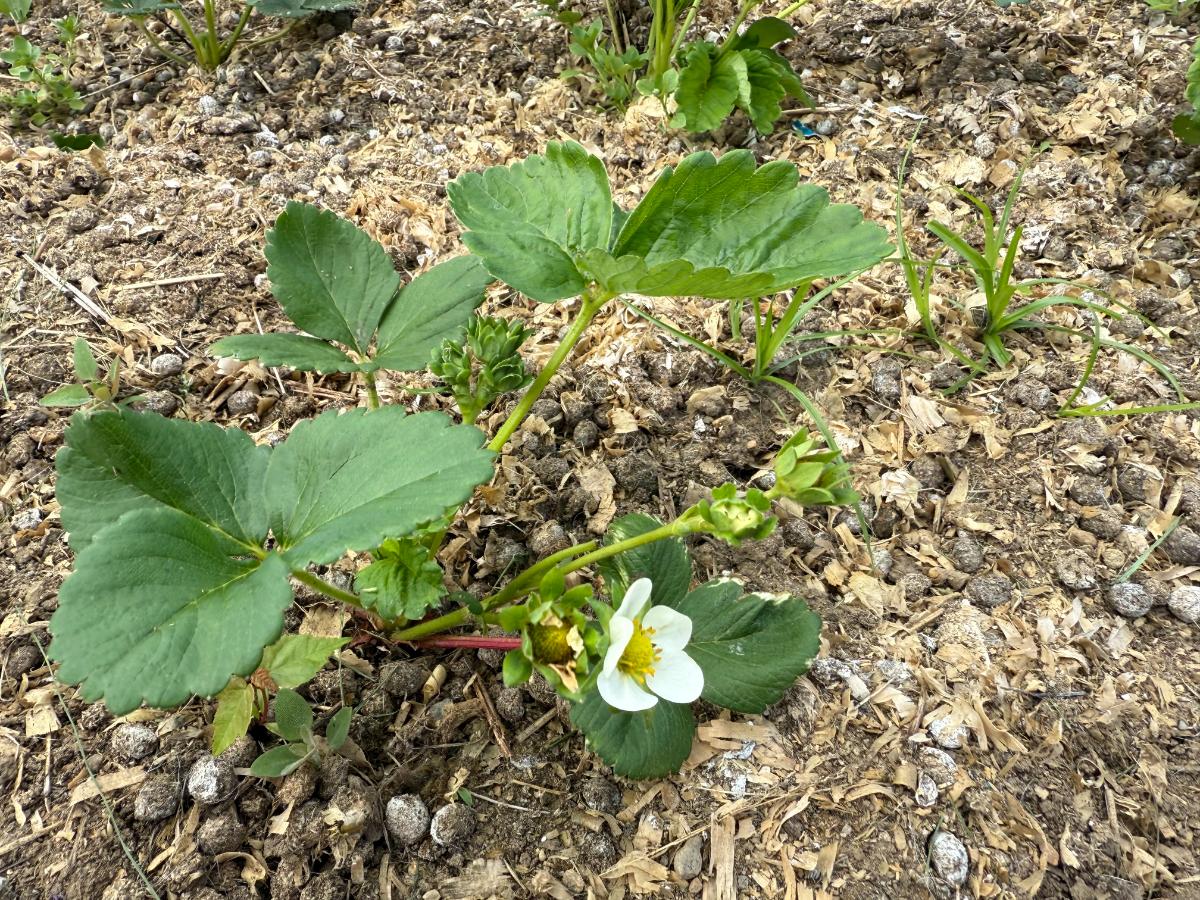
Success with this method really depends on good or great growing conditions. If you don’t have that, don’t attempt to leave the flowers and grow strawberries in the first year. In the case of less-than-ideal growing conditions, the plants will need all the advantages they can get.
If you want to try leaving the first-year blossoms to fruit on your new strawberries, you will need
- To plant on time, as early as possible in the spring
- In soil that is well prepared and amended with compost or fertilizer early in the spring, at planting time
- To keep the plants weed-free
- Keep the plants watered with 1 to 1 ½ inches of water per week
Everbearing plants can offer the best of both worlds
Keep in mind that everbearing and day-neutral strawberries can be a bridge for growers who do not want to waste a year of gardening and maintenance with nothing to show for it.
For these plants, you can pinch and then harvest. Do note, however, the patches themselves usually run out a year or so before June bearing. But of course, you don’t lose berries in the year you replace them!
To Pinch or Not to Pinch First Year Strawberry Blossoms
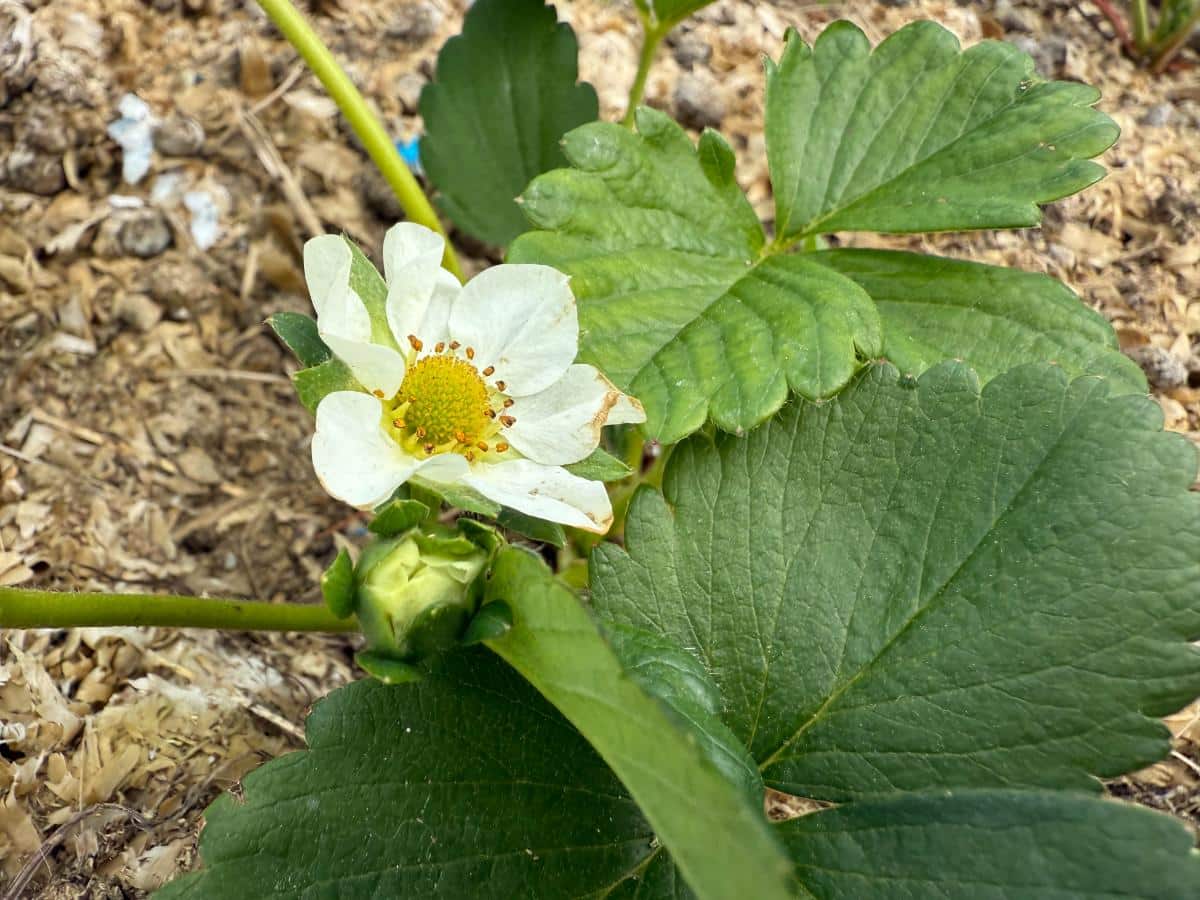
To sum up, you do have options with strawberries. Before you decide not to pinch off those blossoms, though, you should make an informed decision. And you should consider your patch, your soil, and other deciding factors.
Also note, this is only for the first year, no matter what type of strawberry plants you grow. After year one, leave all the blossoms, and pick away!
Here is a summary of points that might help you in deciding whether or not to pinch off your first-year strawberry’s blossoms:
Pros of Not Removing First Strawberry Blossoms
- You get to harvest fruit
- You give pollinators a food source and invite them to your gardens early in the season
- You save a lot of time not having to pinch what will likely be a significant amount of blossoms
- It’s less work for you
Cons of Not Removing First Strawberry Blossoms
- Flowers and fruit create an energy competition within the plant
- Fruiting can stress small plants
- Flower and fruit production set back the plant size
- Plants will have smaller roots
- The stress and small roots can kill weak plants
- May result in a smaller second-year harvest if plants don’t grow enough to support plentiful bud set in the crowns in the fall
Other Considerations
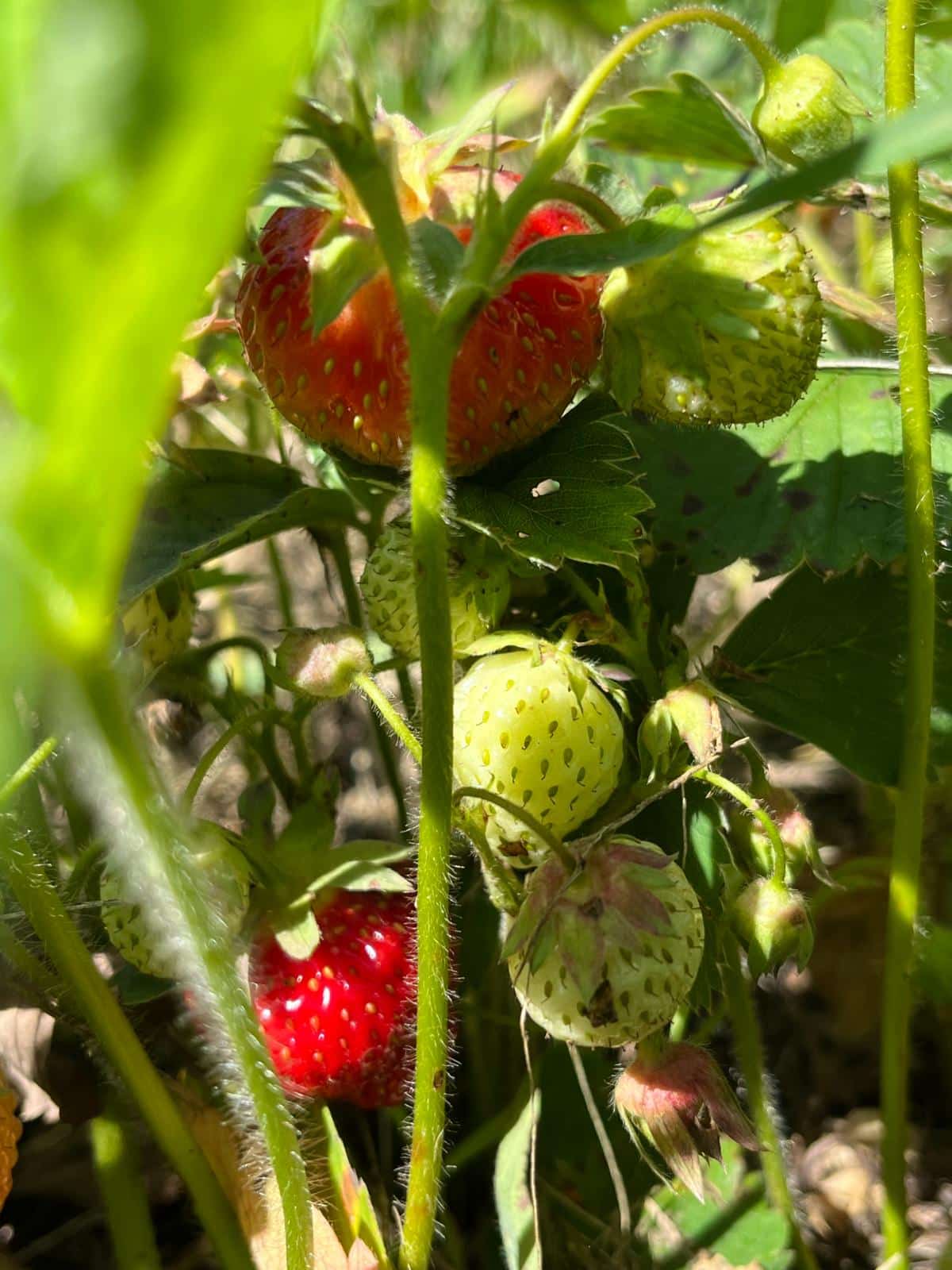
- Plant age and planting time (if bare roots or transplants were planted late, then do not attempt this in the first year; the plants won’t be grown enough by blossoming time)
- Root development by the time of flowering
- Plant size by blossoming time
- Bare root, plant, or plug planting (bare roots catch up quickly, but may need more time to establish first)
- The time the plants will have left in the late season to catch up after fruiting
- Plants are good at adjusting fruit production to their root and support systems
- First-year strawberry plants will probably fruit less in the first year anyway
- First-year berry size is likely to be smaller
- Best success if not removing blossoms is with very well-amended soil and good growing conditions
- Moisture and water access are essential to successful first-year harvesting (not removing blossoms)
- Requires good growing conditions and management to support the plants without pinching


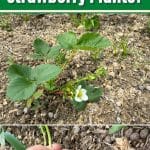
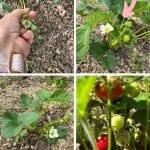

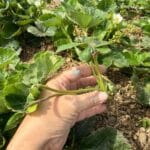
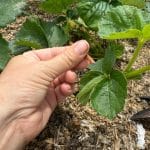
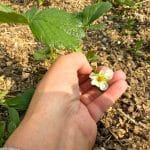
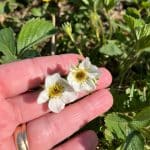
Leave a Reply